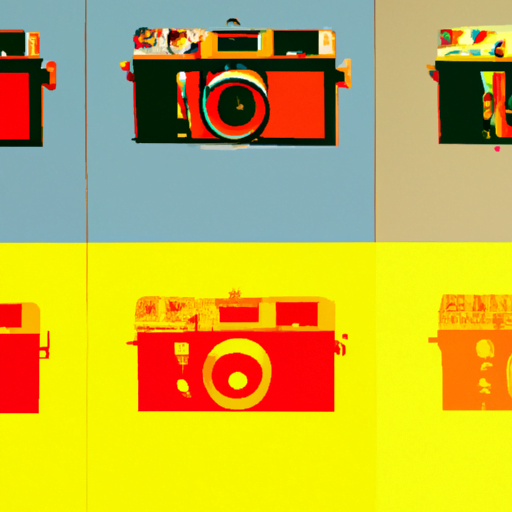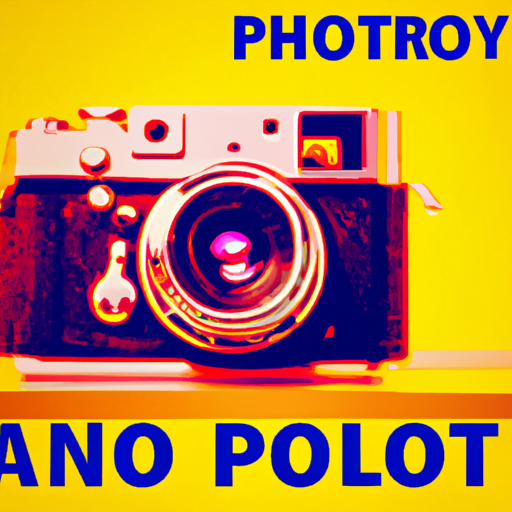
-
Table of Contents
- Exploring the Intersection of Art and Technology in Graphic Design
- The Evolution of Graphic Design
- The Impact of Technology on the Creative Process
- Case Studies: Art and Technology in Graphic Design
- 1. Nike’s “Breaking2” Campaign
- 2. The New York Times’ Interactive Graphics
- The Future of Art and Technology in Graphic Design
- Summary
Exploring the Intersection of Art and Technology in Graphic Design

Graphic design has always been a dynamic field, constantly evolving with the advancements in technology. In recent years, the intersection of art and technology has become increasingly prominent, shaping the way graphic designers create and communicate. This article delves into the fascinating relationship between art and technology in graphic design, exploring how technology has revolutionized the field and the impact it has had on the creative process.
The Evolution of Graphic Design
Graphic design has come a long way since its inception. From hand-drawn illustrations to computer-generated imagery, the tools and techniques used by graphic designers have evolved significantly. The advent of technology has played a pivotal role in this evolution, enabling designers to push the boundaries of creativity and innovation.
One of the most significant advancements in graphic design has been the introduction of computer software and digital tools. Designers now have access to a wide range of software applications that allow them to create stunning visuals, manipulate images, and experiment with various design elements. Programs like Adobe Photoshop, Illustrator, and InDesign have become indispensable tools for graphic designers, providing them with the ability to bring their artistic visions to life.
The Impact of Technology on the Creative Process
The integration of technology into graphic design has revolutionized the creative process. It has not only made design tasks more efficient but has also expanded the possibilities for artistic expression. Here are some key ways in which technology has influenced the creative process:
- Increased Efficiency: Technology has streamlined the design process, allowing designers to work more efficiently. Tasks that once took hours or even days to complete can now be accomplished in a fraction of the time. For example, the use of design software has made it easier to edit and revise designs, eliminating the need for manual corrections.
- Enhanced Collaboration: Technology has made it easier for designers to collaborate with clients and colleagues. With the rise of cloud-based platforms and project management tools, designers can now share their work in real-time, gather feedback, and make revisions collaboratively. This has greatly improved communication and teamwork in the design industry.
- Expanded Creative Possibilities: Technology has opened up a world of creative possibilities for graphic designers. With the ability to manipulate images, experiment with typography, and create interactive designs, designers can now push the boundaries of traditional graphic design. For example, augmented reality (AR) and virtual reality (VR) technologies have allowed designers to create immersive and interactive experiences for their audiences.
Case Studies: Art and Technology in Graphic Design
Several case studies exemplify the powerful combination of art and technology in graphic design. These examples showcase how technology has transformed the way designers approach their work and the impact it has had on the final outcome.
1. Nike’s “Breaking2” Campaign
In 2017, Nike launched the “Breaking2” campaign, aiming to break the two-hour marathon barrier. The campaign’s graphic design elements incorporated technology to create a visually stunning and immersive experience. Nike utilized augmented reality (AR) to allow users to explore the journey of the athletes and interact with the campaign’s content. By merging art and technology, Nike was able to engage its audience in a unique and memorable way.
2. The New York Times’ Interactive Graphics
The New York Times has been at the forefront of incorporating technology into graphic design. Their interactive graphics, such as data visualizations and multimedia stories, have revolutionized the way news is presented. By combining art and technology, The New York Times has made complex information more accessible and engaging for its readers.
The Future of Art and Technology in Graphic Design
The intersection of art and technology in graphic design is an ever-evolving landscape. As technology continues to advance, new opportunities and challenges will arise for designers. Here are some trends that are shaping the future of art and technology in graphic design:
- Artificial Intelligence (AI): AI is poised to have a significant impact on graphic design. From automated design tools to personalized user experiences, AI has the potential to revolutionize the way designers create and communicate.
- Responsive Design: With the increasing use of mobile devices, responsive design has become crucial. Designers need to create visuals that adapt seamlessly to different screen sizes and resolutions, ensuring a consistent and optimal user experience.
- Immersive Experiences: The demand for immersive experiences is growing rapidly. Designers are exploring technologies like virtual reality (VR) and augmented reality (AR) to create interactive and engaging designs that captivate audiences.
Summary
The intersection of art and technology in graphic design has transformed the field, empowering designers to create visually stunning and immersive experiences. Technology has not only enhanced the efficiency of the creative process but has also expanded the possibilities for artistic expression. From increased collaboration to the use of AI and immersive technologies, the future of art and technology in graphic design holds immense potential. As technology continues to evolve, graphic designers must embrace these advancements to stay at the forefront of their craft and continue pushing the boundaries of creativity.
